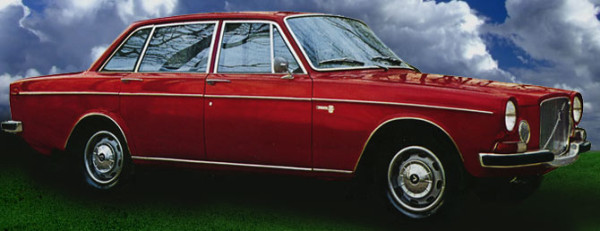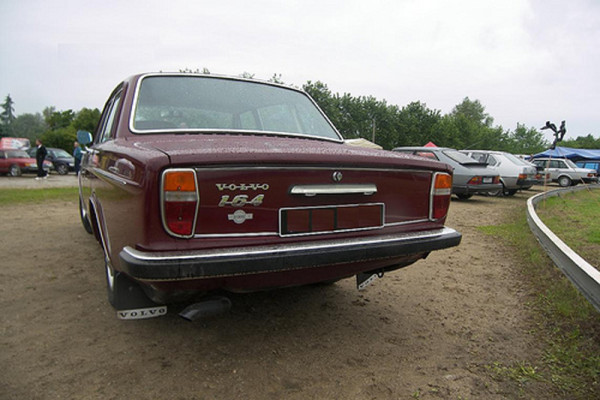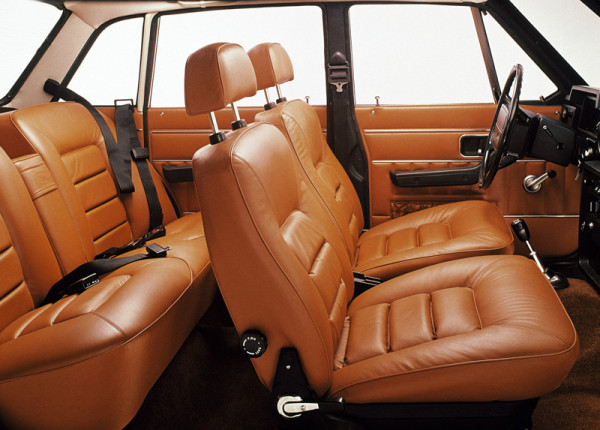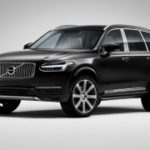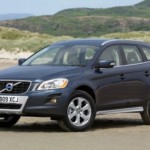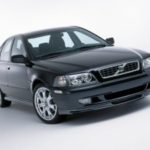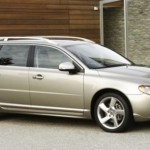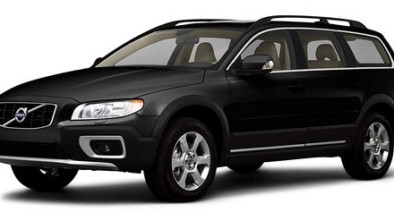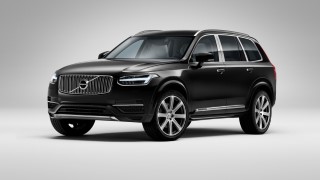Volvo 164 1968 - 1975 - Model history
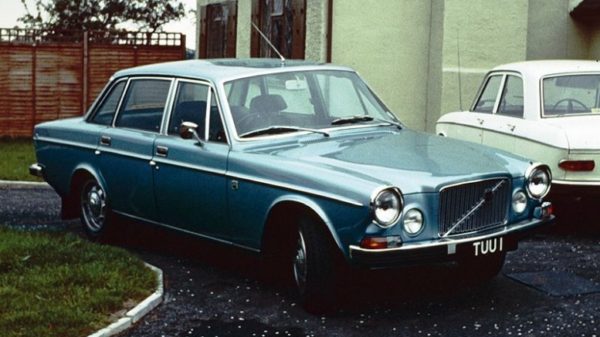
Volvo 164
After more than ten years without a six-cylinder model, in August 1968, it was time for Volvo to unveil its 1969 models, which included a new large car for the luxury segment.
The model was named 164, with the number 6 in the middle indicating that unlike the 140 series, the model was equipped with a six-cylinder engine.
Stylish, elegant and comfortable
«The Volvo 164 is a stylish, well-equipped car with features that include the new six-cylinder in-line engine, sleek and comfortable interior, and various other features that make this car one of the big names in the new Volvo price range. The 164 is a brand new, exclusive car that thoroughly complements the models Volvo Amazon (P120) and Volvo 142/144, representing an attractive and successful expansion of Volvo's model range. ”Thus, the new car was described in an internal info package shortly before its launch in mid-August 1968. The materials were written almost as news reports and it is therefore easy and challenging to quote.
Powerful regular six-cylinder engine
When Volvo stopped production of the PV1957 in 830, it was also an indication of the end of the six-cylinder engines in the company’s automotive program. The B16, B18 and B20 engines, of different types and different powers, provided propulsion for the entire car range in the period from 1957 to 1968. Many remembered, with the set, the big, powerful, quiet six-cylinder Volvo that was literally infinitely durable and the comfortable and spacious cars in which they were installed. Therefore, shortly after the production of the PV830 was halted, a new project was launched - Project 358 - which aimed to develop a more modern replacement equipped with a V8 engine built into the Philip prototype and which, with the B36 designation, was also fitted to the Volvo light truck. Snabbe (Speedy).
The V8 lost
Plans for the introduction of the V8 were soon abandoned, and instead the decision was made to introduce a regular six-cylinder engine with a capacity of 2.7 liters and the possibility of expanding to 3 liters. The engine project was never short-lived, but when the B30 (3 liter) engine was finally unveiled, Volvo proudly wrote: "Volvo engineers always work with a future-focused look, and behind this new engine lie thousands of hours of engineering work and experiments. superior experiences from previous Volvo engines, as well as the use of the latest innovations in engine technology. The B30 engine is built according to the basic rules as well as the already famous and famous B18 engine, and it has all the engineering advantages and functions that have given this small engine a reputation for its reliability and durability. ”And that was exactly it. The regular six-cylinder engine was the ideal engine configuration - fully balanced and extremely efficient with one cold side and one hot side, quiet and quiet during operation. When it comes to the combination of quiet operation, torque, and high-speed capability with no effort over time, there are several types of engine that can be measured with a regular six-cylinder engine.
The first in exhaust control
The B30 had the same internal dimensions as the B20: 88.9 x 80 mm for diameter and stroke. In other words, it was a type of modular engine even before the name was coined, an approach that was further expanded with replaceable valves, pistons and connecting rods in the B18, B20 and B30 engines.
The power output, torque and character of the B30 were the same as in other 3-liter six-cylinder engines, but Volvo in one area far outpaced its competition:
"With 1969 car engines, Volvo is again pioneering the paths in the automotive world - exhaust filtering is standard. The principle is simple: with numerous changes to the carburetor and intake valve system, the result is more complete combustion at low rpm compared to the corresponding engine types. ”
These special changes include thermostatic monitoring of the carburettor, which maintains a constant temperature of the fuel mixture regardless of climatic conditions, as well as an additional valve in the intake manifold that induces pronounced swirling motion and causes the mixture to pre-evaporate. The result is low carbon monoxide and conductor carbon exhaust. When driving at higher rpm, the valves are open and the mixture can flow directly into the engine without pre-evaporation since combustion has already been sufficiently efficient.
Three gearboxes
The Volvo 164 was initially available with a choice of three gears: manual 4-speed or 4-speed overdrive, and 3-speed automatic. The manual gearboxes had a relatively short gearbox lever in the floor between the two seats, but the Volvo 164 could also be ordered with the front bench and the gearshift lever on the steering wheel. Automatic transmission cars were shipped only with the gearshift lever in the steering column.
Return the diagonal line on the mask
The Volvo 164 had a wheelbase of 270 cm, 10 cm more than other such models, creating more space for the long engine and more legroom in the rear seats. Otherwise, the Vovla 164 lines were basically the same as the 144 lines, with a significant difference: the front and the bonnet. Nor has it ever been mentioned that a metal tag held by a diagonal bar has been returned to the front of a Volvo car after an absence of more than 20 years.
The strongest Volvo engine
The beautiful woolen upholstery on the seats and doors created an exclusive atmosphere but unfortunately they were not very durable. Leather upholstery became standard after just one year, with velor available as an option. Like the others in the Volvo range, the 164 has undergone a series of technical and cosmetic changes during the development process. What was perhaps most significant for this model was the introduction of the 164E with fuel injection in the fall of 1971: the B30E with its 175 hp was then the most powerful car engine ever produced at Volvo. The B30 engine has also found its place in several other cars. First of all, it was powered by Zagat's beautifully designed 3000 GTZ studio design, but it was also used in series production in British 3-liter Marcos cars, which is also offered in a 1800 cm3 version with a Volvo B18 engine. In the fall of 1974, the Volvo 164 was replaced by the newly developed and logically named Volvo 264, a V6 engine developed by the PRV, which with various incarnations remained Volvo's flagship model until the autumn of 1990, when the in-line six-cylinder engine was completely new. constructed in aluminum - restarts Volvo model - 960.
Luxury car for 25.000 crowns
A price comparison from 1970 reveals the following prices for different models on Swedish roads: the simplest version of the Volvo 164 with a 4-speed manual gearbox cost SEK 25.300 while the most expensive 164 with automatic transmission and sunroof costs SEK 27.150. That same year, Volvo Amazon cost about SEK 17.500 depending on specifications.
These prices can also be compared to various competitors of the time: BMW 2000 TI SEK 26.950; Citroën DS20 SEK 25.250; Mercedes-Benz 200 SEK 25.950 Hours; Mercedes-Benz 220 SEK 26.950 Hours; Ford Mustang HT (6-cylinder / 3-speed) SEK 26.150; Opel Commodore GS SEK 24.200; Plymouth Valiant SEK 27.555; Rover 3500 V8 SEK 26.900.
The foundations of today's large Volvo sedans
Terms like market segment and niche did not yet exist, but that was exactly what it was about. The Model 164 is a car that paved the way for its successor 260, which in turn paved the way for the very successful 760, which put Volvo on the map of the highest quality car manufacturers that show both prestige and performance. The Volvo 164 has laid the foundation for models that will evolve over the years into the large, modern six-cylinder Volvo cars that are presented today primarily through the Volvo S80.
Retrieved from: archive.vidiauto.com
Recommendation of similar texts:

Hi there, I am Mladen and I am an auto enthusiast. I started this blog years ago to help like minded people share information about latest cars, car servicing ideas, used car info, exotic cars, and auto technology. You will find helpful articles and videos on a wide variety of cars - Audi, Mercedes, Toyota, Porsche, Volvo, BMW and much more. Ping us if you have anything cool to share on latest cars or on how to make older cars more efficient, or just want to say hi!

